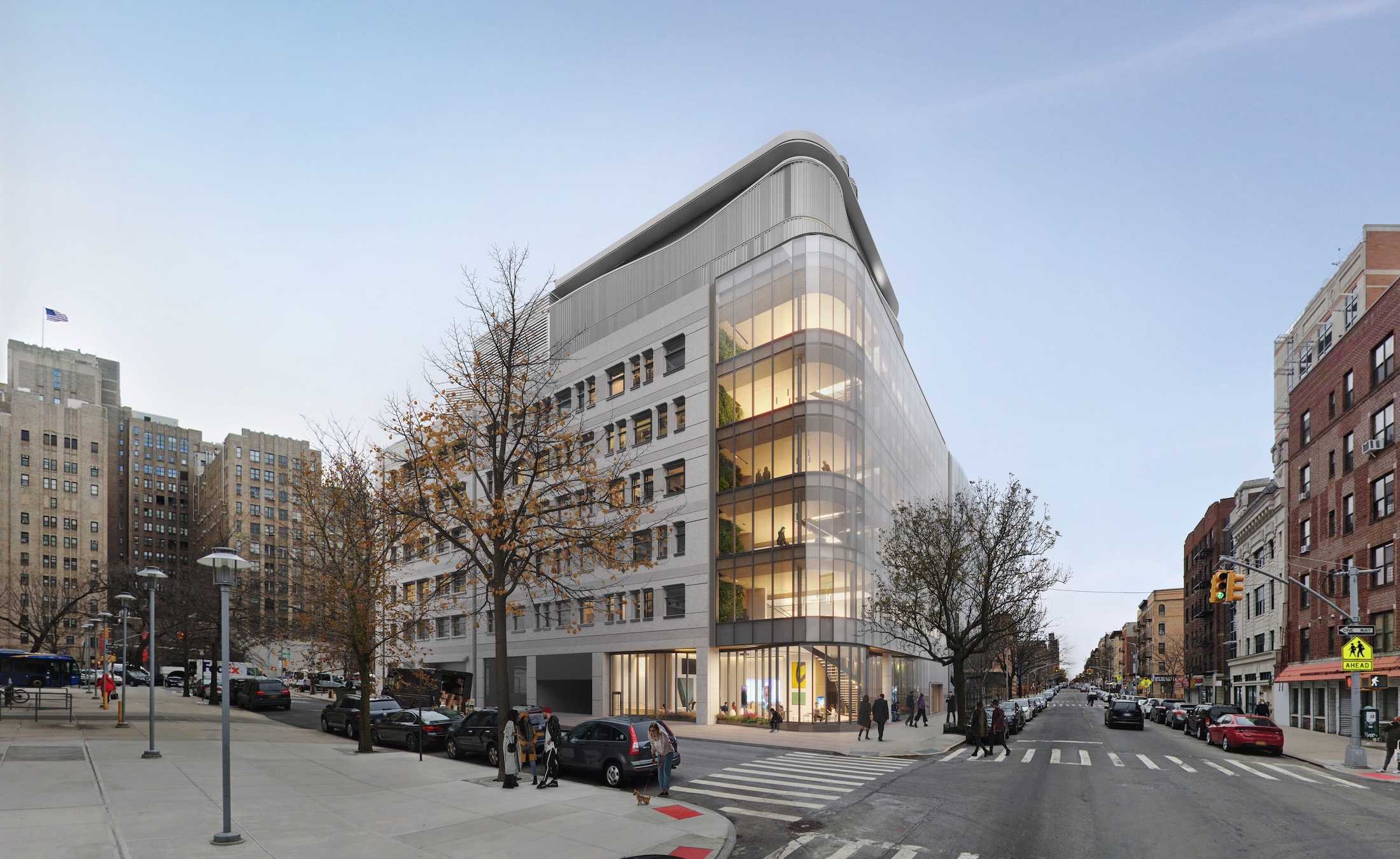Columbia University will soon begin construction on New York City’s first all-electric academic research building. Designed by Kohn Pedersen Fox (KPF), the 80,700-sf building for the university’s Vagelos College of Physicians and Surgeons will provide eight floors of biomedical research and lab facilities as well as symposium and community engagement spaces.
With a design that uses significantly less energy than similar buildings, the Biomedical Research Building will outperform emission limits set by local law and is expected to perform 30% more efficiently than the commercial building benchmark. The facility also supports Columbia University’s plan to introduce no new fossil fuel infrastructure into campus buildings and to achieve campus-wide net-zero emissions by 2050.
Because laboratories have greater ventilation requirements than other buildings, they require more robust mechanical systems, which typically result in increased energy usage. The design team worked with sustainability consultant Atelier Ten to create an all-electric research lab building that could handle the facility’s high heating loads.
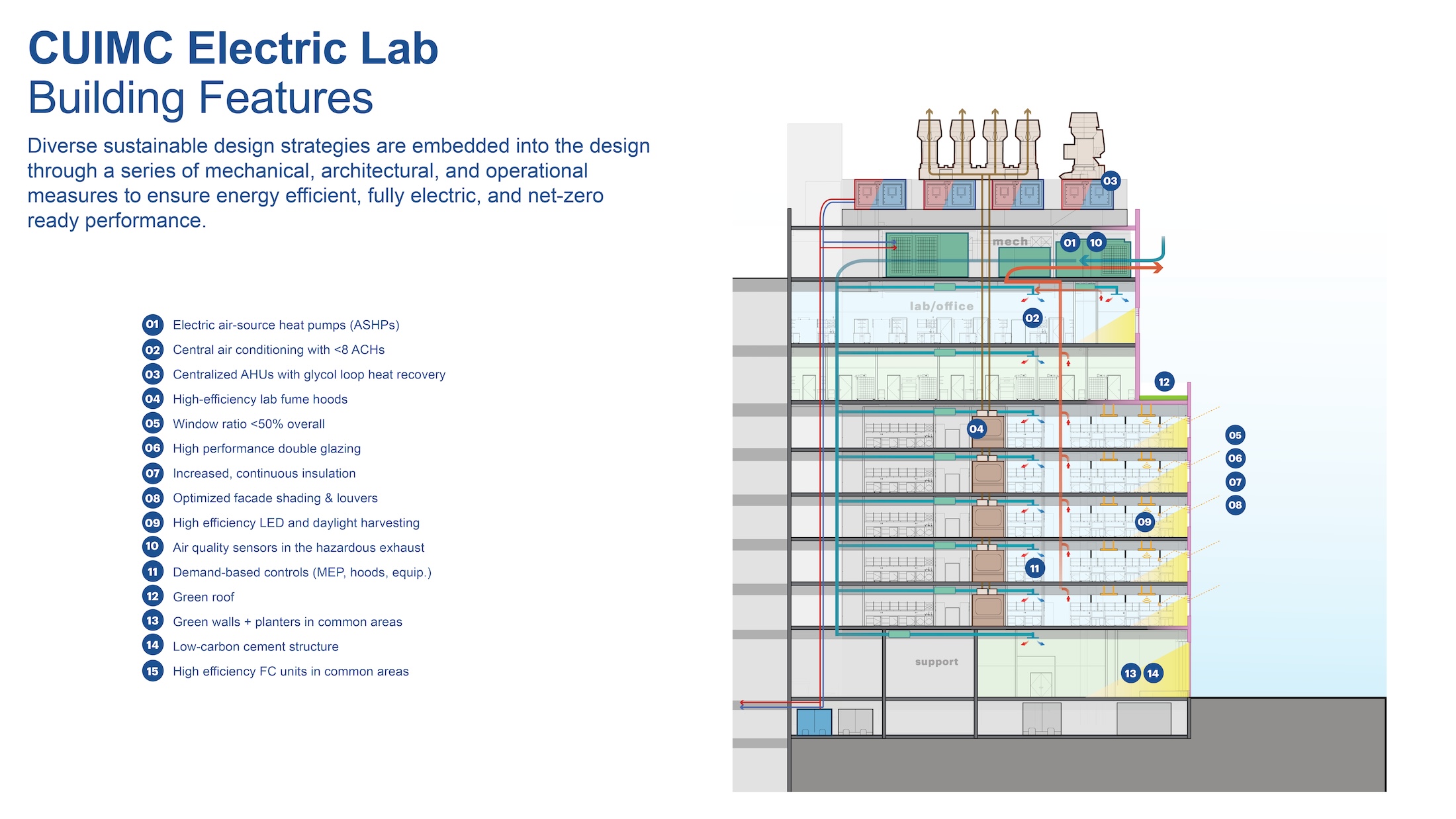
The Biomedical Research Building is heated and cooled with electric air source heat pumps that allow for energy recovery between the heating and cooling fluids, providing periods of free tempering during the year. Air-side energy recovery systems use waste heat to reduce the total energy needed to condition the building.
The high-performance façade features a window-to-wall ratio below 50%. Exterior shading and a louver system reduce solar heat gain and glare while reflecting natural light into the labs.
The building’s design integrates biophilic elements such as green walls and natural and renewable materials in collaboration spaces. A large connecting stair encourages active circulation, and corner lounges foster collaboration among researchers.
On the Building Team:
Architect: Kohn Pedersen Fox (KPF)
MEP engineer: AKF Group
Structural engineer: Hatfield Group
Sustainability consultant: Atelier Ten
Lab planning consultant: Jacobs
Construction manager: LF Driscoll Healthcare

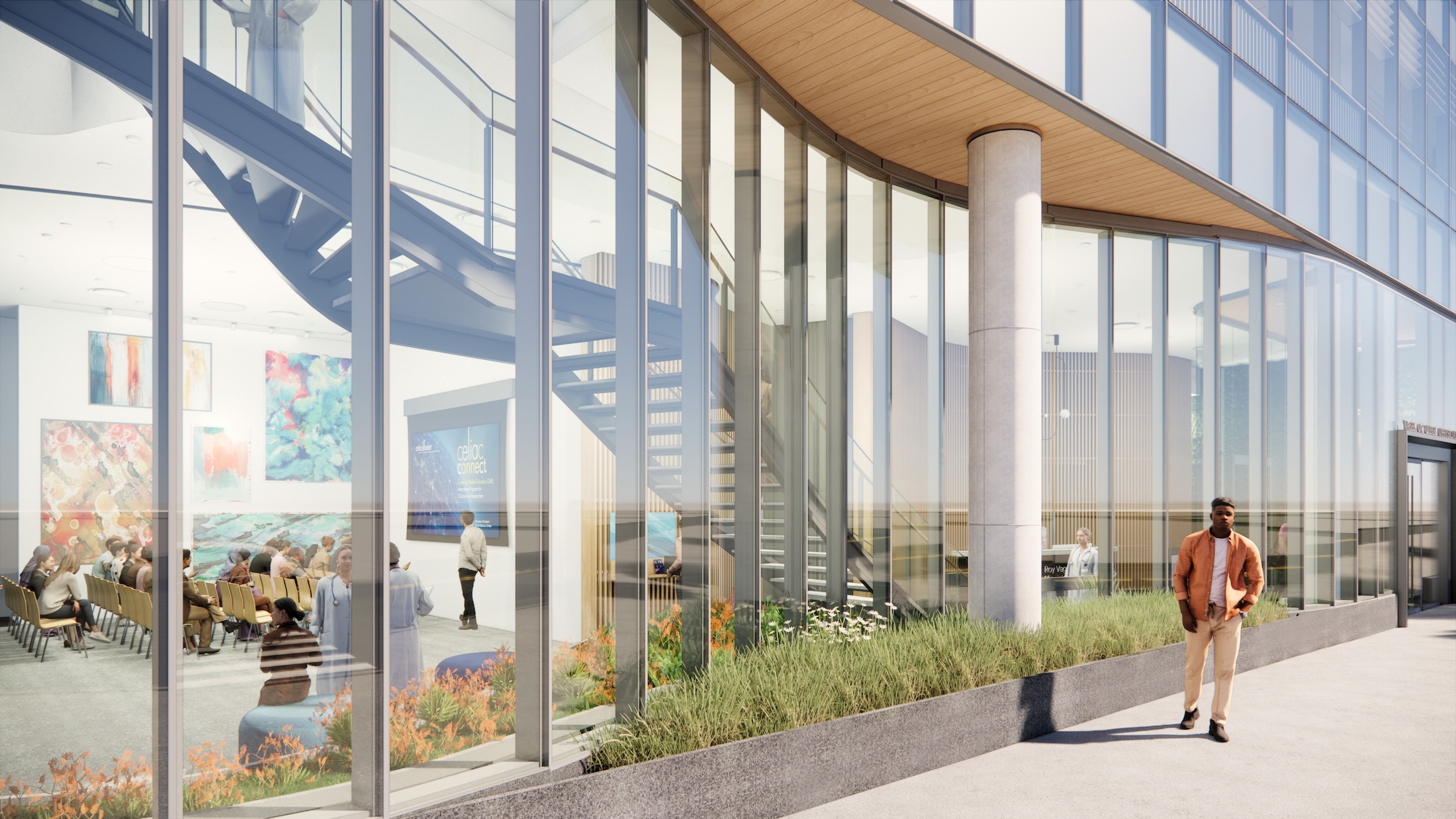


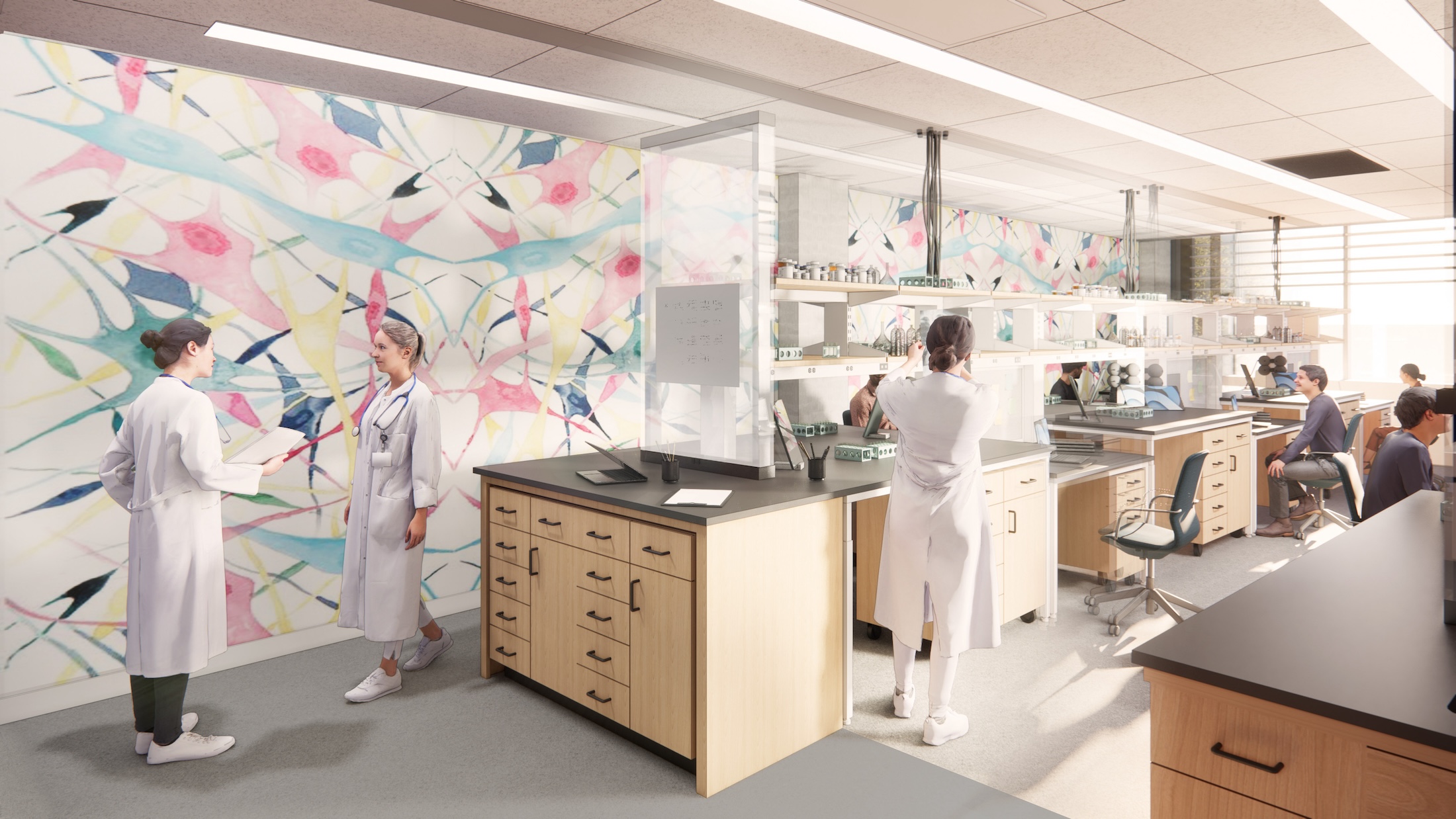

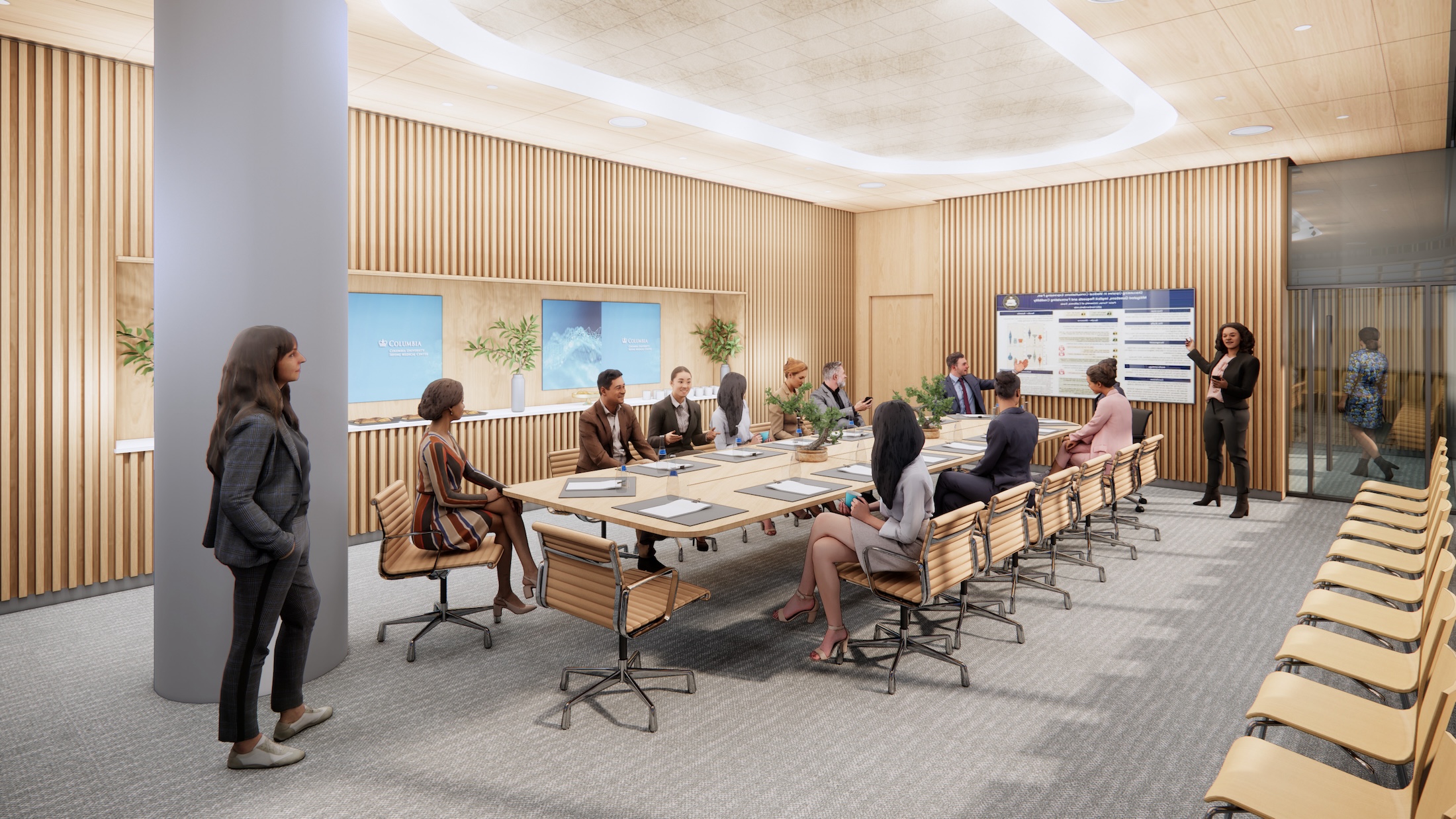

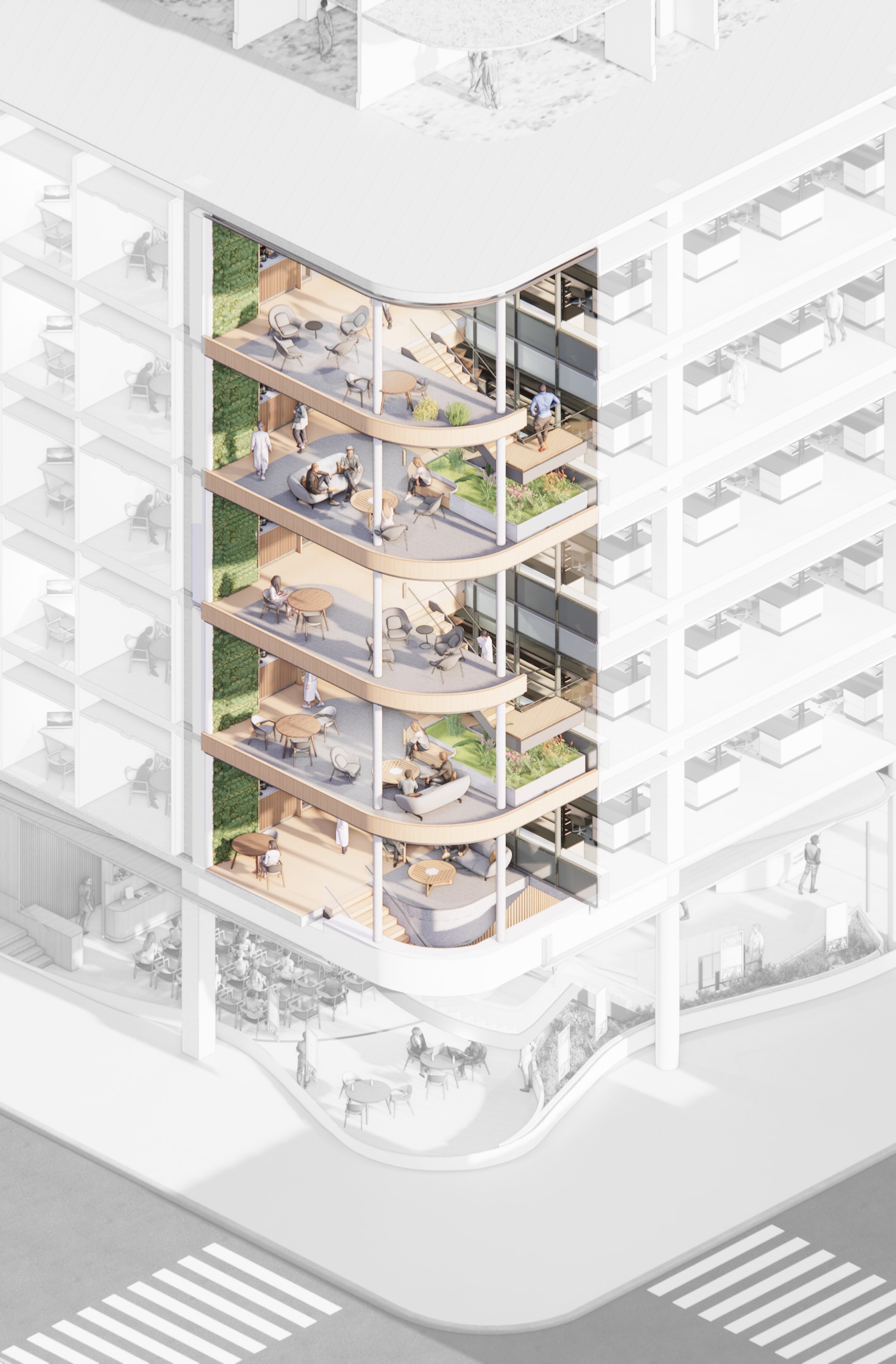
Related Stories
| May 1, 2014
First look: Cal State San Marcos's posh student union complex
The new 89,000-sf University Student Union at CSUSM features a massive, open-air amphitheater, student activity center with a game lounge, rooftop garden and patio, and ballroom space.
| Apr 29, 2014
USGBC launches real-time green building data dashboard
The online data visualization resource highlights green building data for each state and Washington, D.C.
Smart Buildings | Apr 28, 2014
Cities Alive: Arup report examines latest trends in urban green spaces
From vertical farming to glowing trees (yes, glowing trees), Arup engineers imagine the future of green infrastructure in cities across the world.
| Apr 16, 2014
Upgrading windows: repair, refurbish, or retrofit [AIA course]
Building Teams must focus on a number of key decisions in order to arrive at the optimal solution: repair the windows in place, remove and refurbish them, or opt for full replacement.
| Apr 9, 2014
Steel decks: 11 tips for their proper use | BD+C
Building Teams have been using steel decks with proven success for 75 years. Building Design+Construction consulted with technical experts from the Steel Deck Institute and the deck manufacturing industry for their advice on how best to use steel decking.
| Apr 8, 2014
Science, engineering find common ground on the Northeastern University campus [slideshow]
The new Interdisciplinary Science and Engineering Building is designed to maximize potential of serendipitous meetings between researchers.
| Apr 2, 2014
8 tips for avoiding thermal bridges in window applications
Aligning thermal breaks and applying air barriers are among the top design and installation tricks recommended by building enclosure experts.
| Mar 26, 2014
Callison launches sustainable design tool with 84 proven strategies
Hybrid ventilation, nighttime cooling, and fuel cell technology are among the dozens of sustainable design techniques profiled by Callison on its new website, Matrix.Callison.com.
| Mar 20, 2014
Common EIFS failures, and how to prevent them
Poor workmanship, impact damage, building movement, and incompatible or unsound substrate are among the major culprits of EIFS problems.
| Mar 12, 2014
14 new ideas for doors and door hardware
From a high-tech classroom lockdown system to an impact-resistant wide-stile door line, BD+C editors present a collection of door and door hardware innovations.


